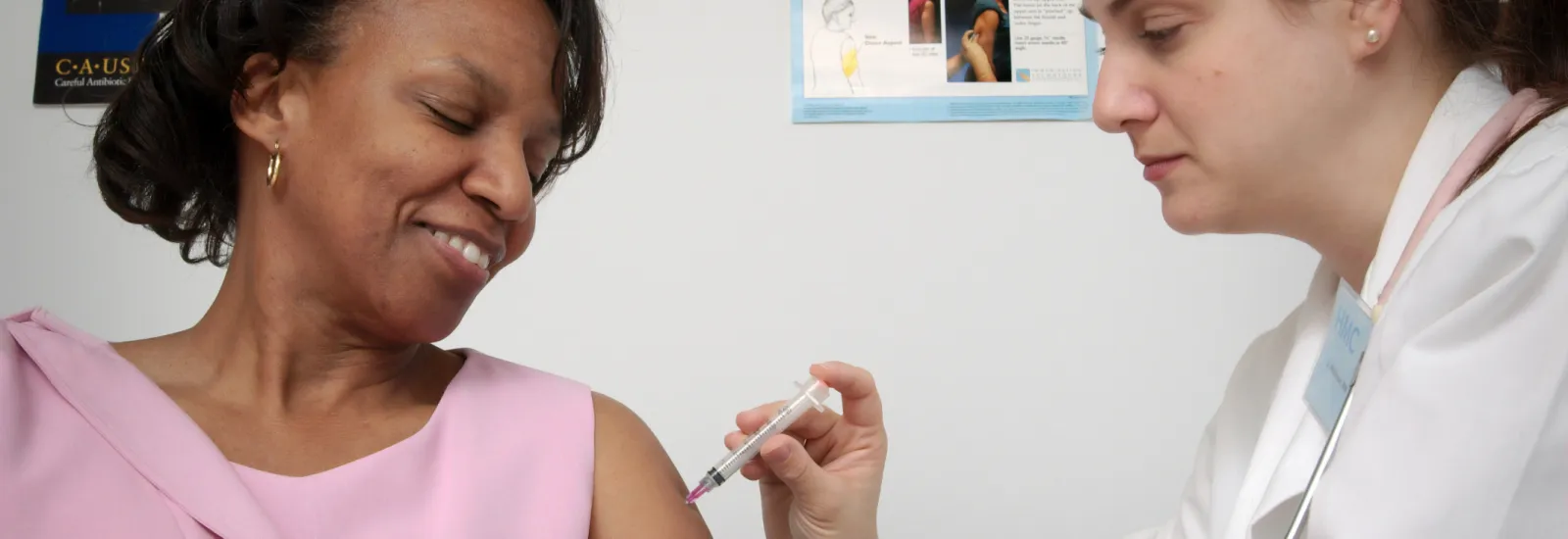
Shingles is Painful, but Preventable
One third of the population will experience shingles at some point in their life. Fortunately the Food and Drug Administration (FDA) recently approved a vaccine — Shingrix — that boasts a greater than 90% prevention rate for vaccinated individuals. The significant success rate of the vaccine exceeds the previous vaccine Zostavax and is now recommended by the Centers for Disease Control (CDC) for eligible individuals 50 years and older.
What is shingles?
Shingles, or herpes zoster, is a painful skin rash that develops on one side of the face or body. It is caused by the varicella-zoster virus (VZV), the same virus that causes chickenpox. Anyone who has had chickenpox in the past can get shingles because VZV remains in the body after a person recovers from chickenpox. VZV can reactivate many years later, causing shingles.
Shingles is more common in older adults, people who have medical conditions that weaken the immune system, and people who take medications that suppress their immune systems. Getting vaccinated is the best way to prevent shingles.

What are some of the symptoms of shingles?
The signs normally appear in a small section (often a straight line) on only one side of the body. These signs and symptoms may include:
- Intense pain
- Tingling/burning sensation
- Sensitivity to touch
- Itching
- Blistering rash that lasts 7-10 days (sometimes up to 4 weeks)
Some people may also experience:
- Headache
- Fever
- Chills
- Nausea
Management includes antiviral therapy and supportive care to help relieve the associated discomfort.
What can I do to prevent shingles?
The CDC now recommends vaccination against the Herpes Zoster virus with the vaccine Shingrix (2017). The recommendation is for any adult 50 years old and older to receive 2 doses of the Shingrix vaccination with 2 to 6 months between doses. This vaccine takes the place of the former Zostavax due to increased effectiveness and immunity for a longer period of time.
The vaccine is also recommended for those who have previously received Zostavax or had a prior episode of shingles. Daniel Wegg M.D. primary care physician and Medical Director of Reid Health Physician Associates encourages patients to revaccinate with Shingrix because it is a more effective vaccine.
Zostavax decreases in efficacy 15-25% after one year while Shingrix maintains an 85% efficacy for four years. Furthermore the vaccine is approved in younger patients as young as 50 years old due to the ability to provide protection for a longer period of time than Zostavax. Some suppressed immune conditions may not be recommended to receive vaccination; however Shingrix is not a weakened form of the virus and thus is safe for some immunosuppressed conditions. Shingrix may be associated with side effects such as myalgia's or pain at the injection site but these resolve within a few days. Dr. Wegg reiterates "I think the bottom line is you get a lot more protection for a little more discomfort. Well worth it even if you have already had the [Zostavax] vaccine. I recommend it to all my high risk patients and plan on getting it myself."
You can visit the CDC website for further reading on both shingles and the Shingrix vaccine. https://www.cdc.gov/vaccines/vpd/shingles/public/shingrix/index.html
Reach out to your primary care doctor if you have any questions or would like to discuss Shingrix further.
Don't have a doctor? We can help. Click here to contact a referral line coordinator.

